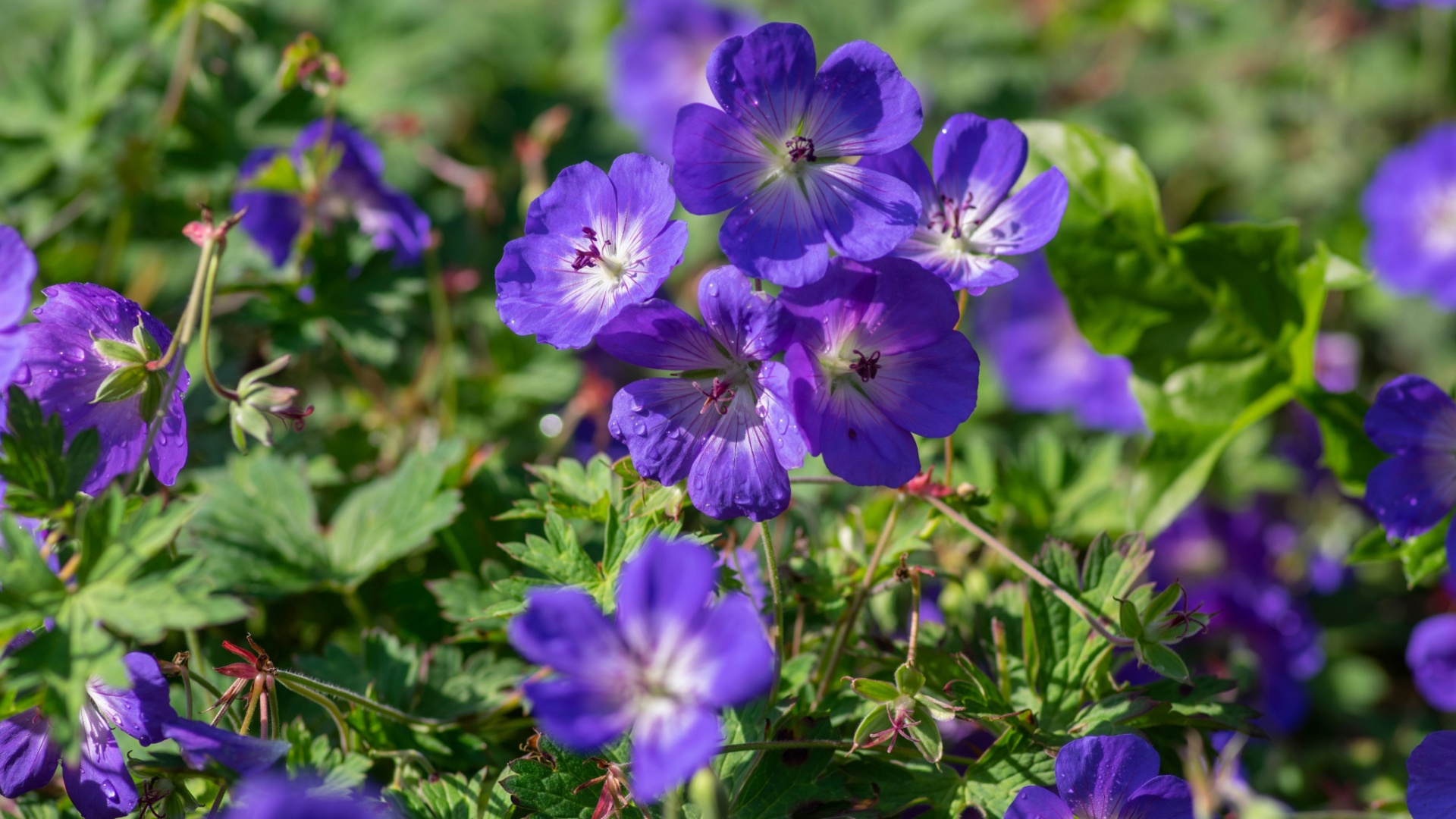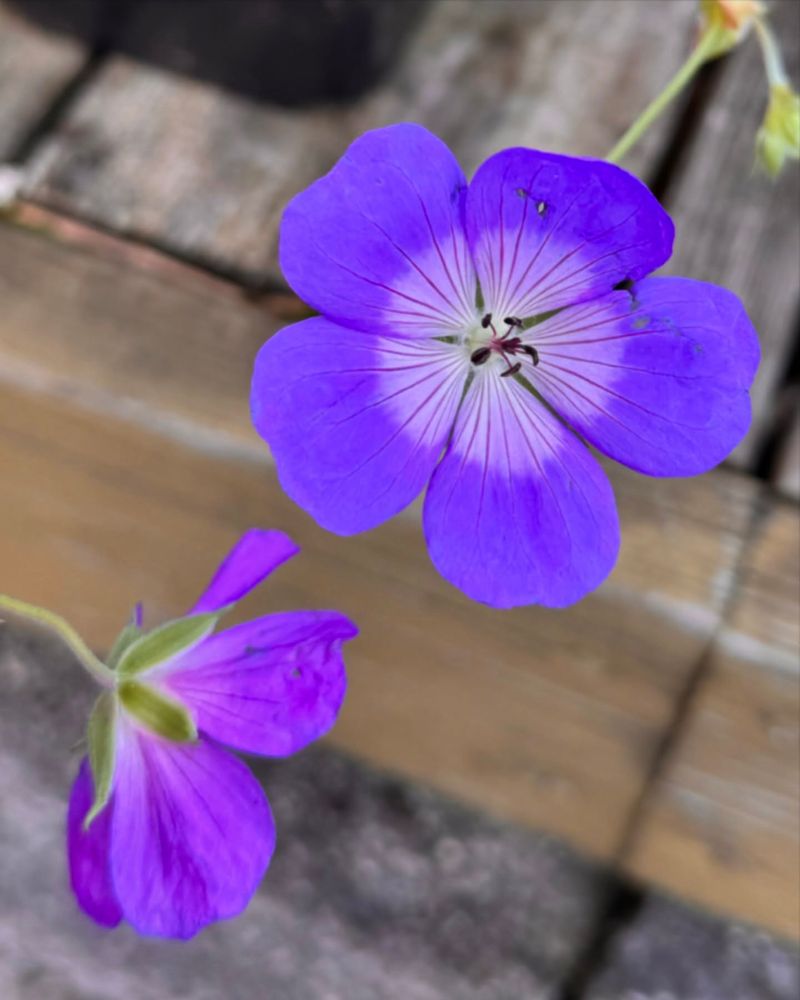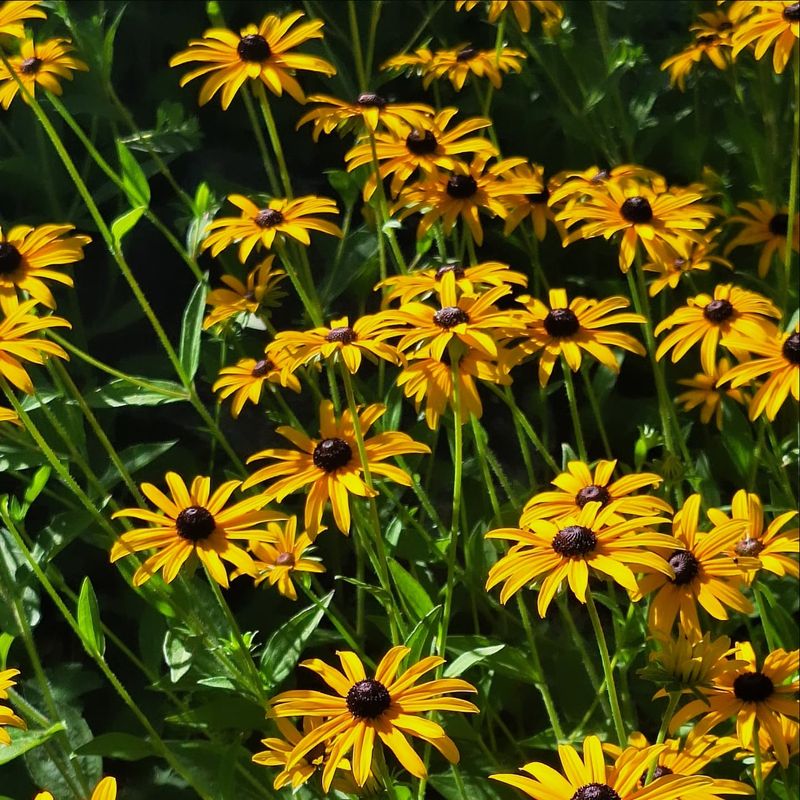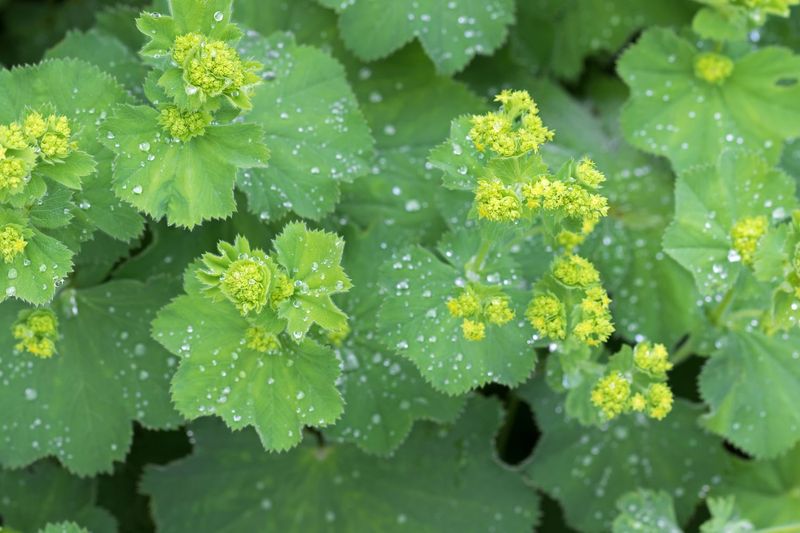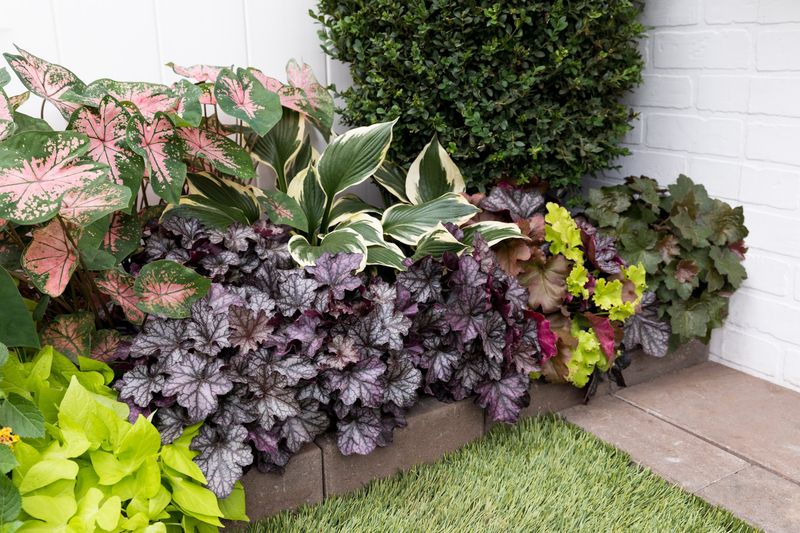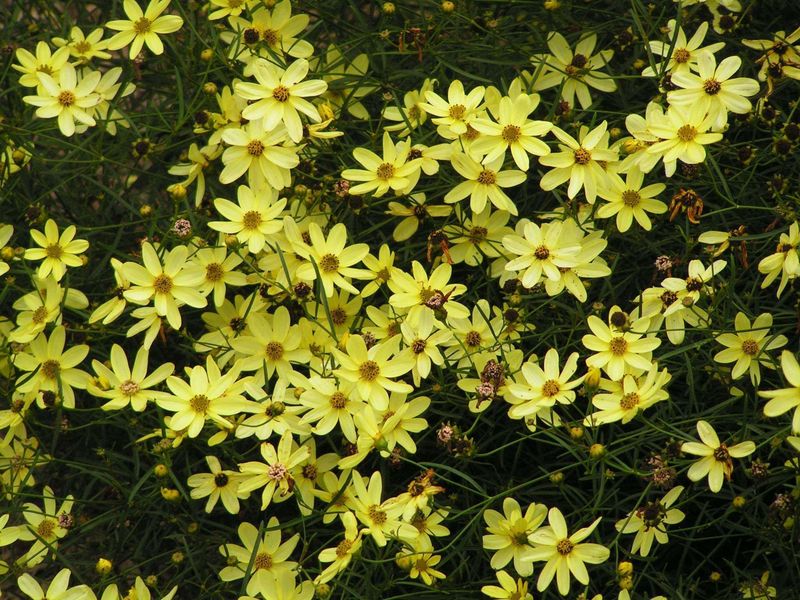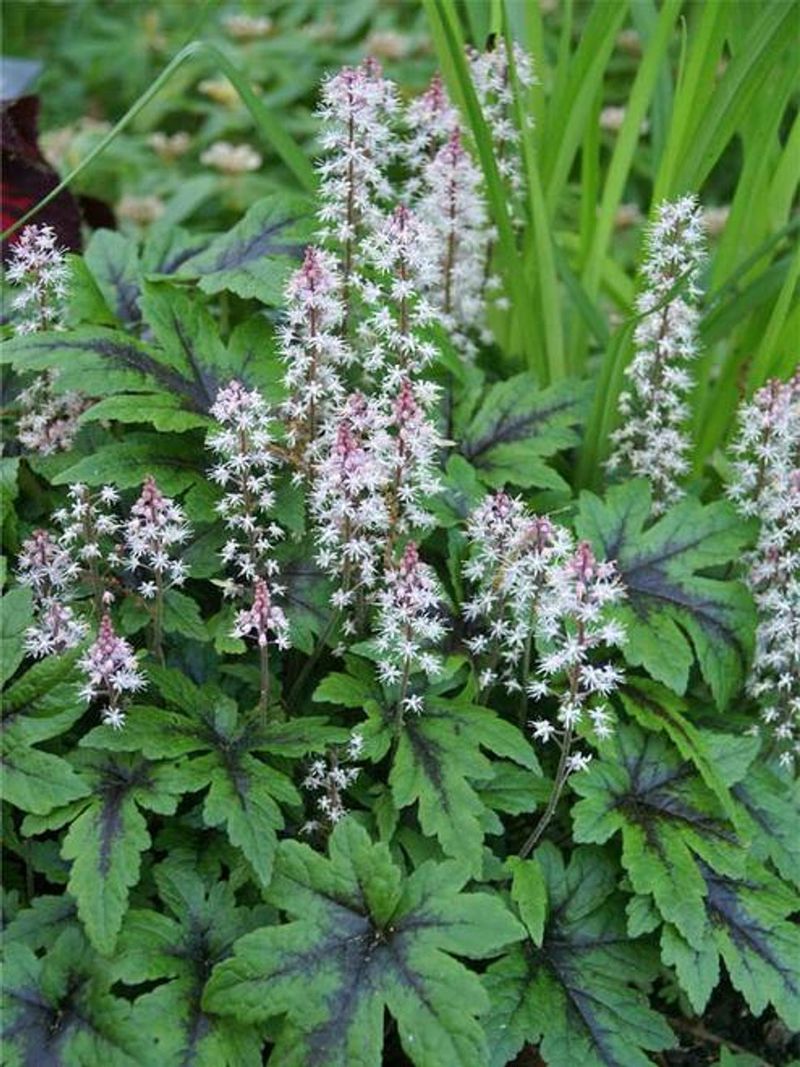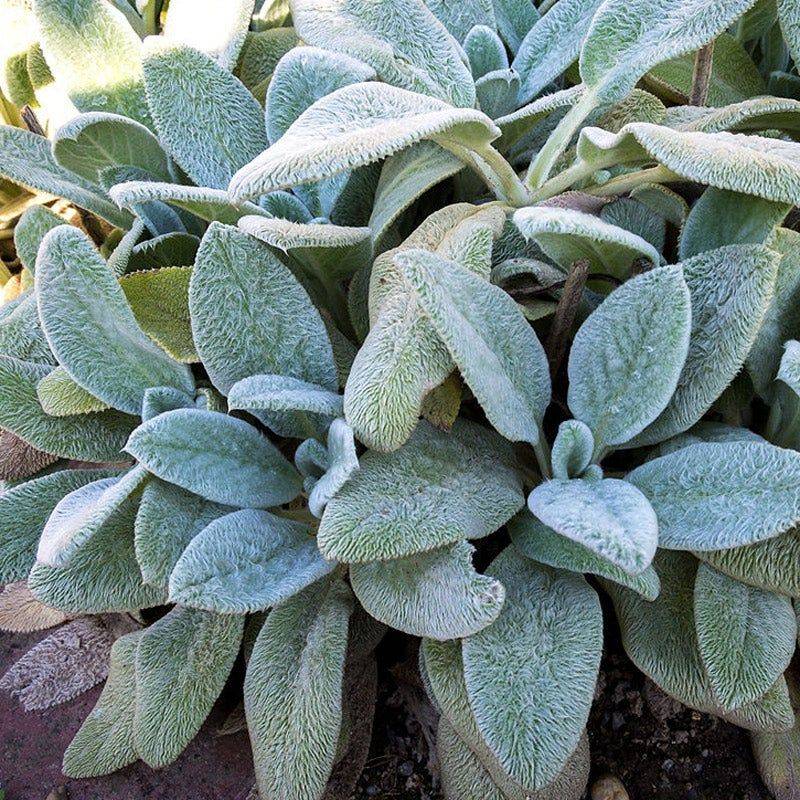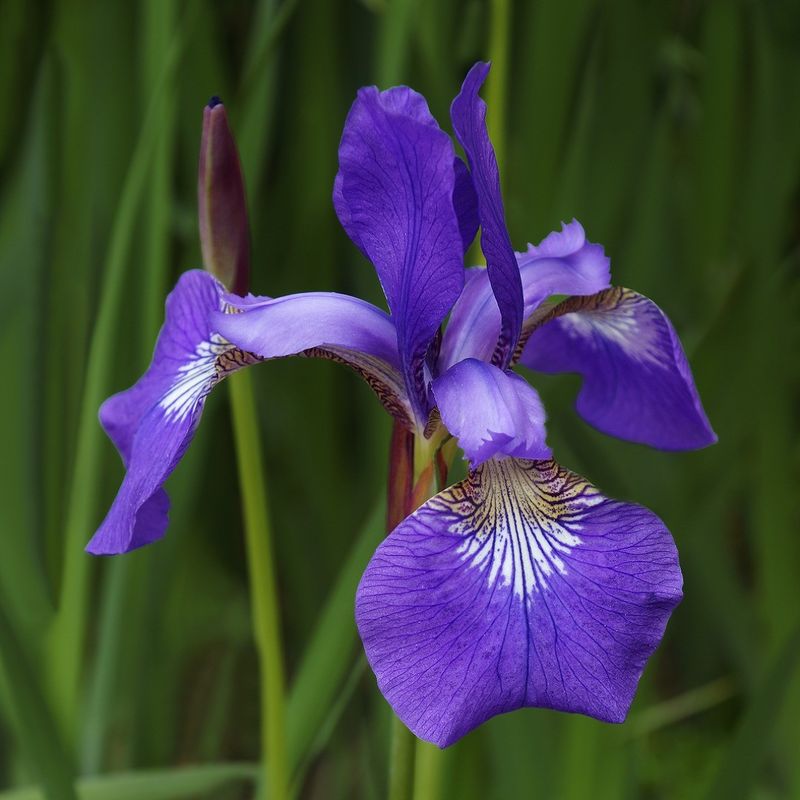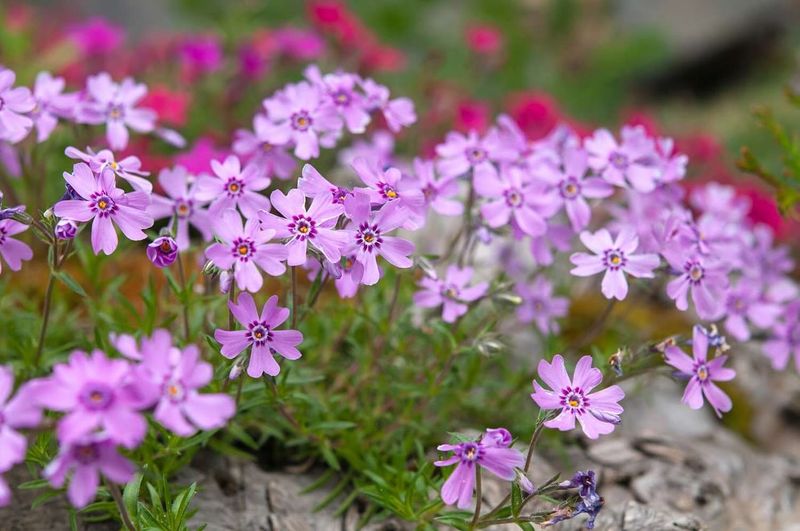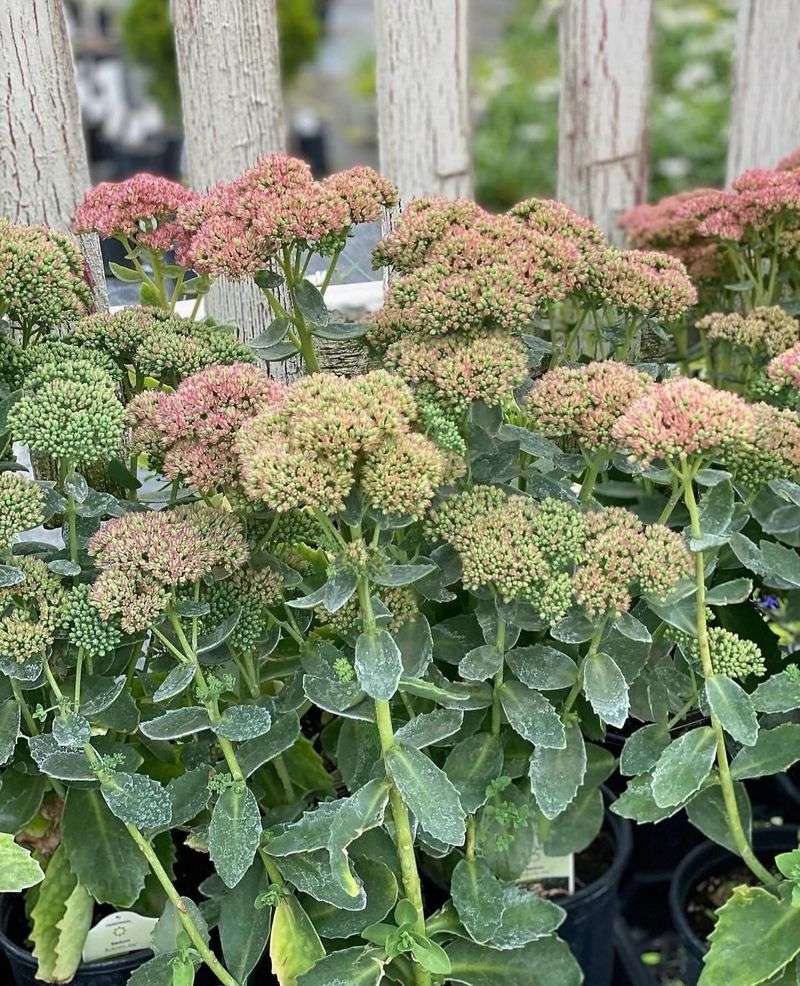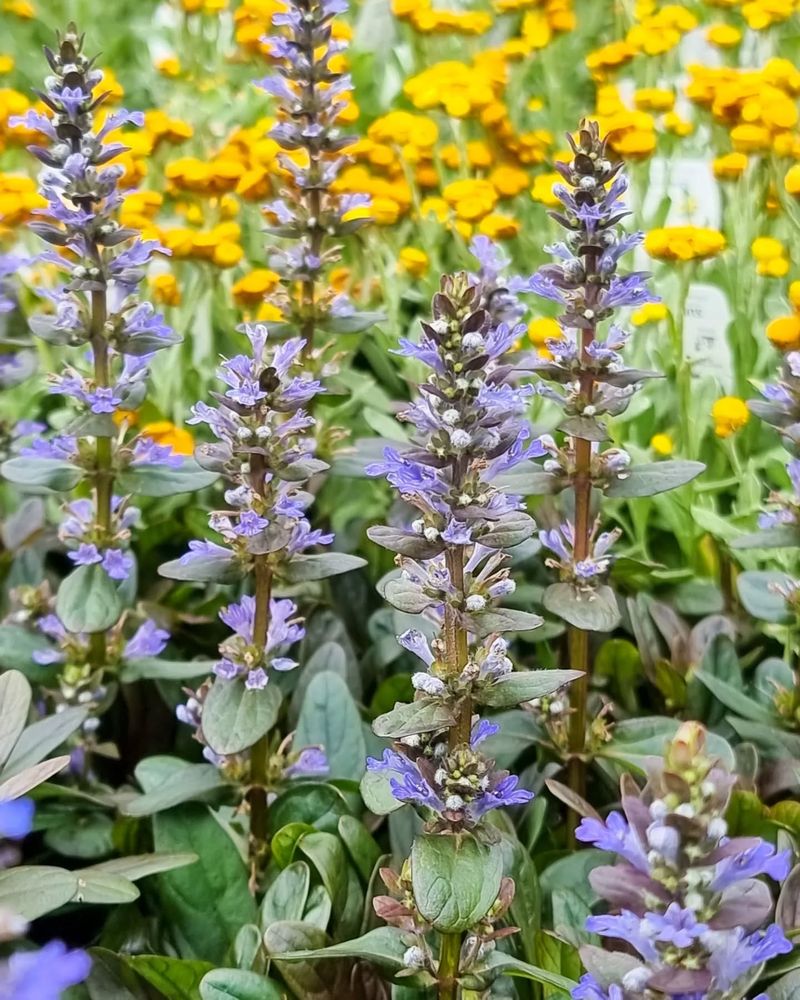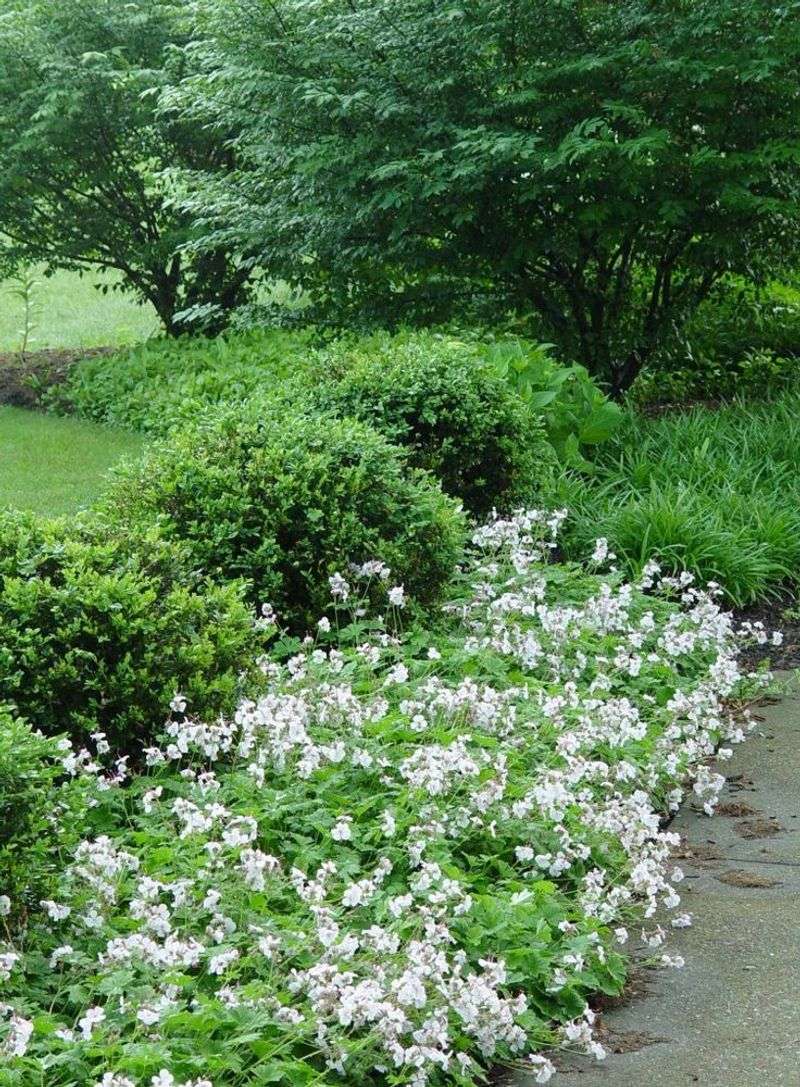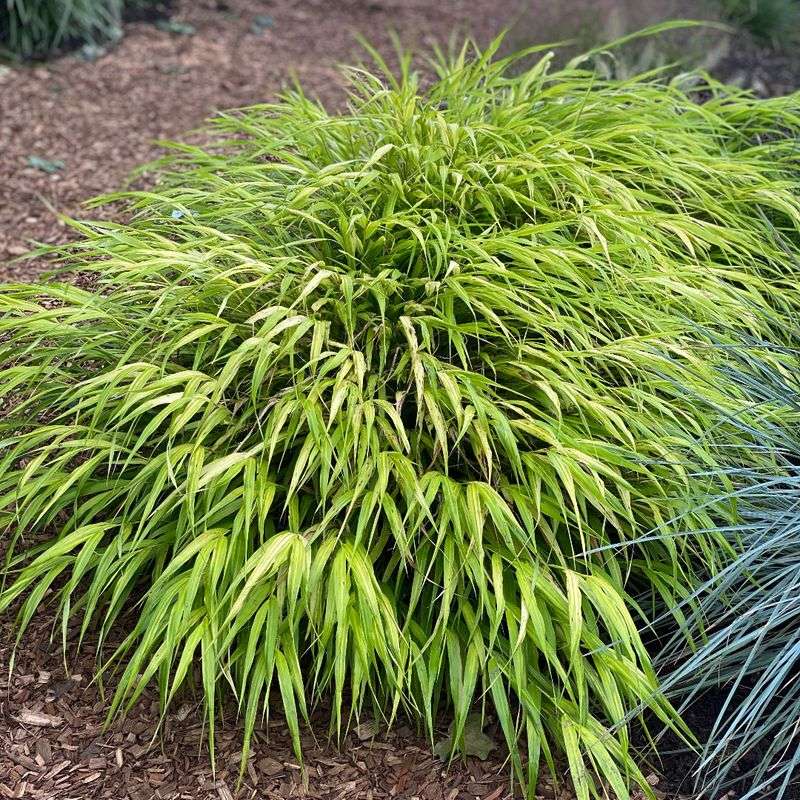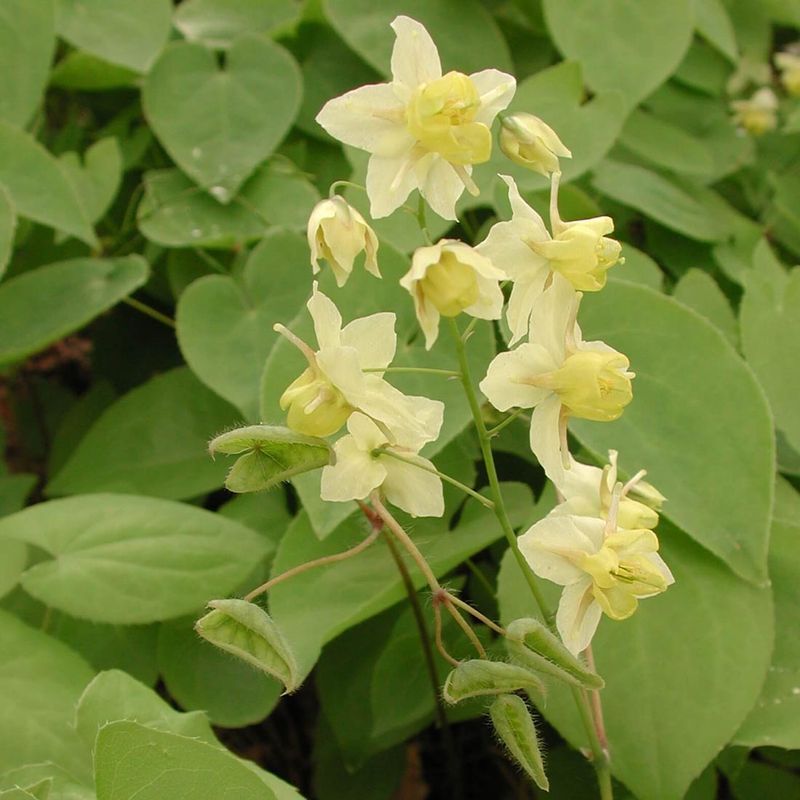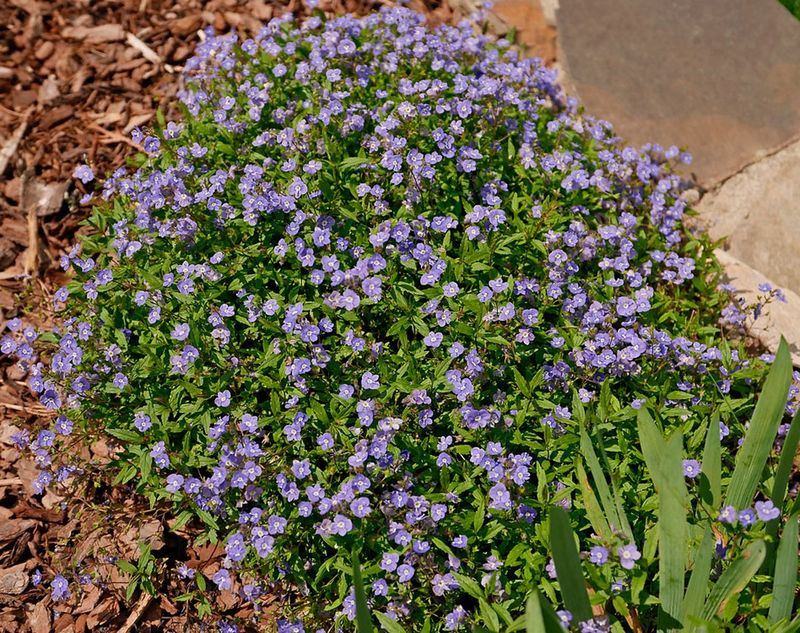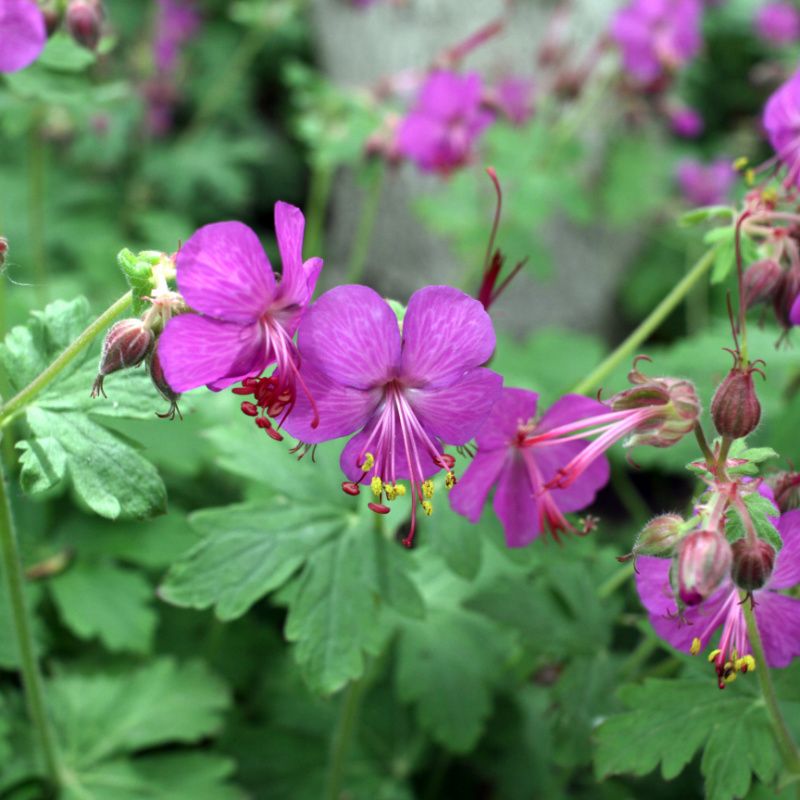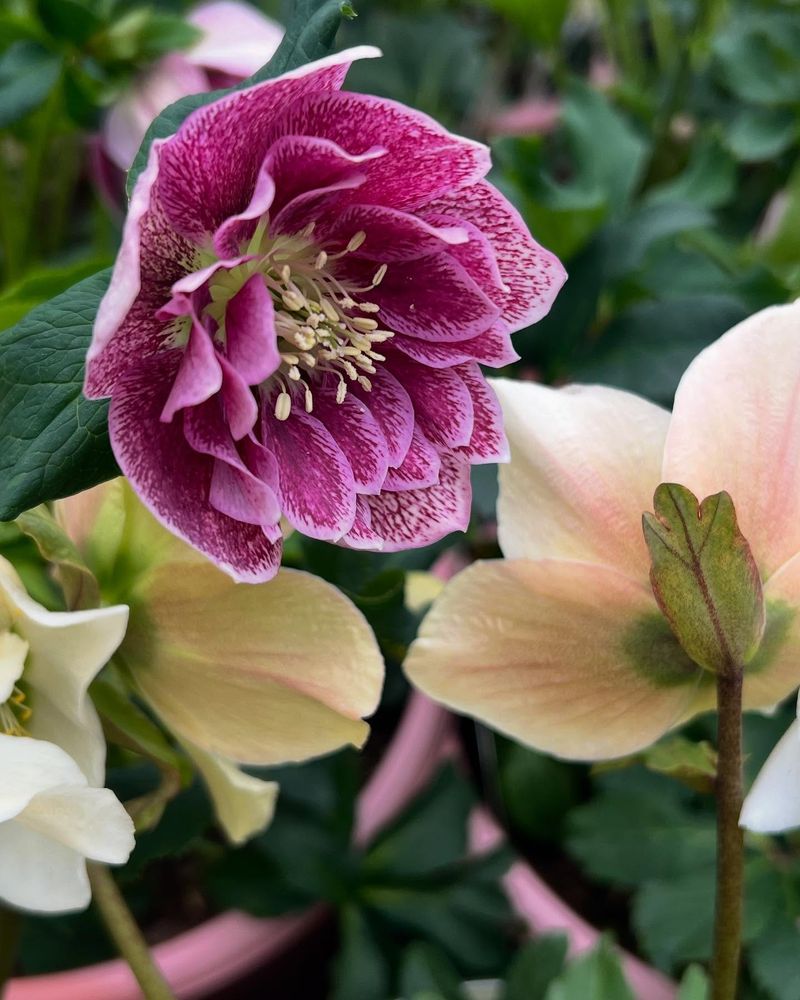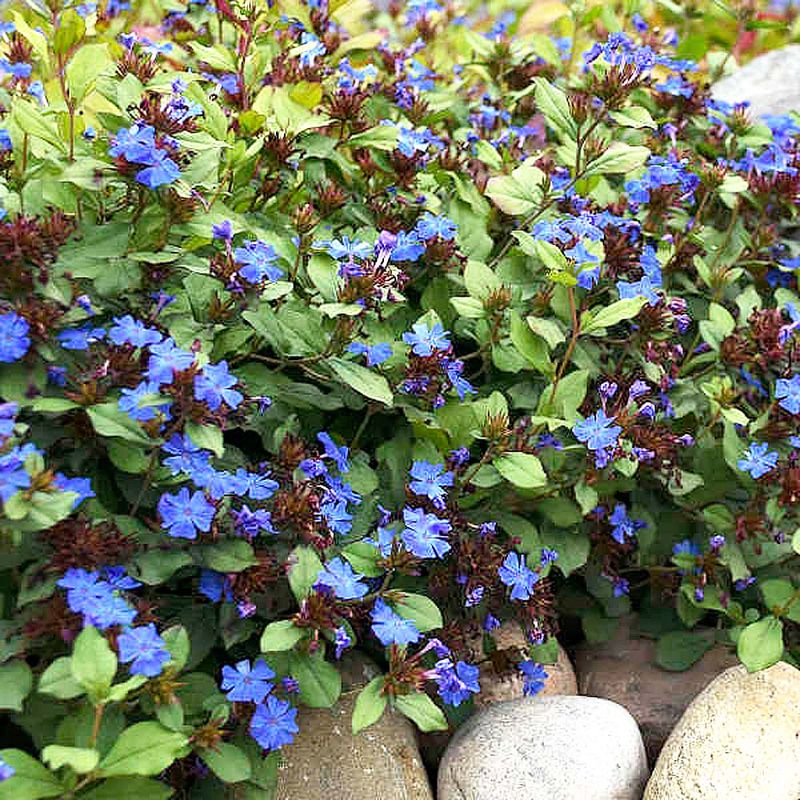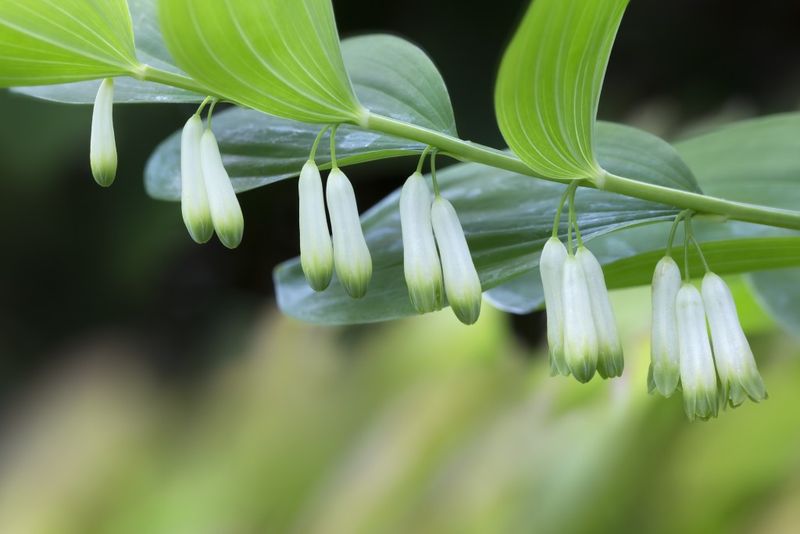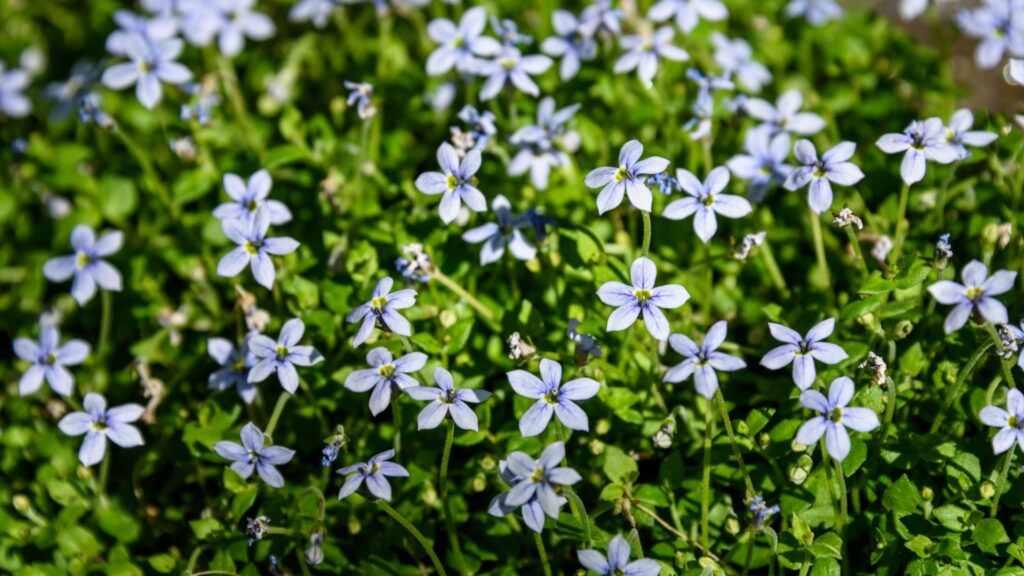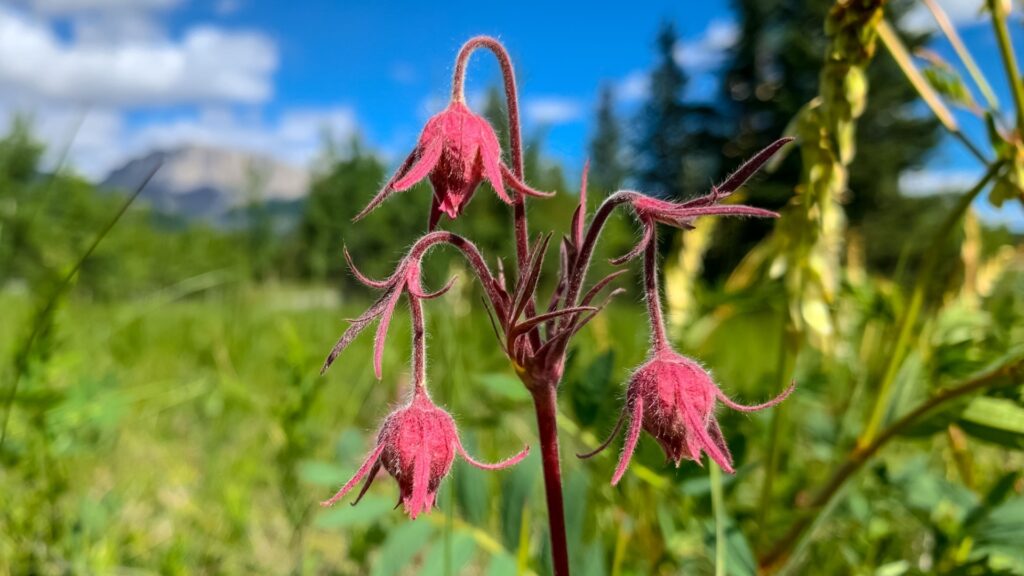Every garden’s got those awkward bald spots that just beg for a little magic. The right spreading perennials? They’re worth their weight in gold—if you pick the right ones.
Some plants are slowpokes, others act like they own the joint. The sweet spot lies in perennials that spread just enough to patch things up—without elbowing out the neighbors.
These garden team players add color and texture without kicking up a fuss. Plant them once, and they quietly pull their weight season after season.
1. Geranium ‘Rozanne’
This award-winning perennial geranium creates a beautiful flowing carpet of violet-blue flowers that bloom from late spring until frost. Space plants about 18 inches apart and they’ll politely fill the gaps within two seasons.
Unlike many spreading plants, ‘Rozanne’ stays where you plant it rather than sending runners everywhere. The blue-purple blooms against deeply cut foliage create a stunning contrast in partially shaded areas.
I planted three small pots along my front walkway three years ago, and they’ve merged into a gorgeous swath that spills slightly over the pavement. Visitors always ask about these undemanding beauties.
2. Black-Eyed Susan
Sunny golden flowers with distinctive dark centers make this native plant a garden favorite. Black-eyed Susans spread through underground rhizomes at a manageable pace, gradually forming larger clumps without aggressive invasion.
These drought-tolerant beauties bloom from midsummer to fall, attracting butterflies and providing late-season color. Dividing them every three years keeps them vigorous and prevents the center from dying out.
My original three plants have multiplied to cover about six square feet over four years. They’ve been remarkably well-behaved, creating a bright spot in my garden that requires almost no maintenance beyond an annual cleanup.
3. Lady’s Mantle
Morning dew collects like diamonds on the scalloped leaves of Lady’s Mantle, creating a magical effect in the garden. This low-growing perennial spreads gradually through self-seeding, but seedlings are easy to spot and remove if they appear where unwanted.
Chartreuse flower clusters appear in early summer, hovering above the foliage like little clouds. Lady’s Mantle thrives in partial shade and makes an excellent ground cover or border edging that stays within bounds.
The soft, velvety leaves in my woodland garden edge have formed a lovely drift that hasn’t overstepped its boundaries in five years. I especially love how they catch raindrops and hold them like tiny crystal balls.
4. Coral Bells (Heuchera)
Modern varieties of Heuchera come in a rainbow of leaf colors from purple to caramel to lime green. These tidy clump-formers spread gradually outward from the center, doubling in size every couple of years without becoming invasive.
Their delicate flower stalks rise above colorful foliage in spring and summer, attracting hummingbirds. Coral bells perform best in part shade and well-drained soil, where they’ll form neat mounds that complement other perennials.
I’ve lined a curved path with alternating purple and caramel varieties. After three years, they’ve filled in beautifully without a single plant needing to be reined in. Their reliable nature makes garden planning so much easier.
5. Coreopsis ‘Moonbeam’
Pale yellow daisy-like flowers dance above finely textured foliage on this reliable spreader. ‘Moonbeam’ coreopsis forms a slowly expanding clump through underground stems, filling spaces without aggressive behavior.
The airy texture and nearly continuous summer blooming make this plant perfect for sunny borders. Cutting it back after the first flush of flowers encourages a second impressive bloom cycle and keeps the plant looking fresh.
After adding just two small plants to my butterfly garden, I now have a two-foot-wide patch that plays nicely with neighboring plants. The delicate appearance belies its tough nature—it sailed through last summer’s drought without complaint while looking absolutely charming.
6. Foam Flower
Dappled shade gardens benefit from this native woodland plant that spreads via short runners to form a loose colony. Foam flower’s maple-like leaves often have dark centers and create an attractive ground layer even when not in bloom.
Fuzzy spikes of star-shaped white or pink flowers appear in spring, hovering about 8 inches above the foliage. The plant’s gentle spreading habit makes it perfect for naturalizing under trees where it mingles beautifully with ferns and hostas.
My woodland garden patch started as five small plants that have now created a loose carpet covering about 10 square feet. They’ve filled in around existing plants without smothering them—exactly the kind of well-mannered spreader every gardener appreciates.
7. Lamb’s Ear
Soft, silvery foliage that begs to be touched makes Lamb’s Ear a favorite in children’s gardens and sensory plantings. This drought-tolerant perennial spreads steadily via underground stems, forming a silvery carpet that’s easy to contain by simply pulling unwanted plants.
Growing just 12-18 inches tall, Lamb’s Ear creates a striking contrast against darker green plants and purple flowers. The cultivar ‘Silver Carpet’ rarely flowers, focusing its energy on producing a neat mat of touchable foliage.
A small clump I planted along my garden path has expanded to about three feet wide over four years. Whenever it ventures too far, I simply pull up the edge plants and share them with neighbors—a perfect example of a spreader that’s generous without being aggressive.
8. Siberian Iris
Elegant and architectural, Siberian iris forms slowly expanding clumps of narrow, upright foliage topped with stunning blooms in late spring. Unlike some irises that can take over, these well-mannered plants increase their footprint gradually through rhizomes.
Available in shades from deep purple to white, these versatile plants maintain attractive foliage all season after their blooming period. They perform beautifully near water features but adapt to average garden conditions as long as they don’t dry out completely.
The ‘Caesar’s Brother’ variety has thrived in my rain garden for six years. What began as three plants has become a graceful stand of about a dozen flowering clumps that provide vertical interest without crowding neighboring plants.
9. Creeping Phlox
Spring gardens burst into life when creeping phlox blankets the ground with masses of pink, purple, or white star-shaped flowers. This low-growing perennial spreads by stolons to form a dense, weed-suppressing mat that’s perfect for slopes and edging.
Needle-like evergreen foliage provides year-round interest and helps prevent soil erosion. Unlike its aggressive cousin, creeping phlox stays where you want it and can be easily trimmed back after flowering if it ventures too far.
My front yard slope was transformed by just six small plants that have now covered a 4×5 foot area. During bloom time, it creates such a spectacular display that drivers actually slow down to look! Yet it’s never tried to invade the lawn or other garden areas.
10. Sedum ‘Autumn Joy’
Succulent foliage and late-season blooms make this upright sedum a garden standout. It spreads slowly by producing new crowns around the original plant, creating a larger clump that remains well-defined rather than running throughout the garden.
Flat clusters of tiny star-shaped flowers start pale green in late summer, gradually changing to deep pink and then rusty red by fall. The dried flower heads provide winter interest and food for birds when left standing through the cold months.
A single plant in my sunny border has become a lovely 18-inch wide clump over three years. I particularly value how it provides crucial late-season food for pollinators when many other plants have finished blooming, all without requiring any control measures.
11. Ajuga (Bugleweed)
Low-growing ajuga creates a colorful carpet of foliage in shades ranging from deep green to bronze to variegated patterns. It spreads via above-ground runners called stolons, filling in bare spots under trees and between larger perennials.
Spikes of blue-purple flowers rise 6-8 inches above the foliage in spring, attracting early pollinators. While ajuga does spread steadily, it’s shallow-rooted and easy to remove from unwanted areas, making it far more manageable than truly invasive plants.
The chocolate-leaved variety ‘Chocolate Chip’ has been a perfect solution for a difficult dry shade area under my maple tree. It’s filled in completely after two years but stays right where I want it, creating a rich tapestry that suppresses weeds beautifully.
12. Hardy Geranium ‘Biokovo’
Delicate white flowers with pink centers float above a refined mound of deeply cut foliage on this exceptionally well-behaved spreader. ‘Biokovo’ geranium gradually expands its footprint through underground stems but maintains a tidy habit that works beautifully in borders.
Semi-evergreen in milder climates, this geranium offers multi-season interest and turns lovely shades of red and orange in fall. Its drought tolerance once established makes it perfect for those challenging spots where water is limited.
I tucked several plants between roses in my garden five years ago. They’ve now formed a continuous ground layer that suppresses weeds while allowing the roses to shine. Even in our hot summers, they maintain their fresh appearance with minimal care.
13. Japanese Forest Grass
Graceful arching leaves that ripple in the slightest breeze give Japanese forest grass an almost bamboo-like appearance. This shade-loving ornamental grass spreads slowly through rhizomes, forming larger clumps without becoming invasive.
Variegated forms like ‘Aureola’ bring golden striping that brightens shady corners. The cascading habit makes it perfect for container edges or woodland borders where it catches light beautifully and provides movement.
A single plant near my north-facing steps has taken three years to grow from a 4-inch pot to a 15-inch wide clump. Its slow but steady growth creates exactly the right amount of spread for a well-designed garden—filling in nicely without requiring constant monitoring.
14. Barrenwort (Epimedium)
Heart-shaped leaves with a fine tracery of veins make barrenwort attractive even when not in bloom. This tough shade perennial gradually forms a weed-suppressing mat through slowly spreading rhizomes that are easy to control.
Delicate fairy-like flowers in shades of yellow, pink, or white appear in early spring on wiry stems. Some varieties offer spectacular spring foliage in red or bronze tones, while others remain evergreen in milder climates.
The variety ‘Sulphureum’ has been the perfect solution for a dry area under mature trees where few plants thrive. Starting with just three small divisions five years ago, I now have a beautiful 3×4 foot patch that politely mingles with emerging spring bulbs without overwhelming them.
15. Speedwell (Veronica ‘Georgia Blue’)
Brilliant blue flowers cover this low-growing perennial in early spring, creating a stunning carpet of color. ‘Georgia Blue’ speedwell spreads by creeping stems that root as they touch the ground, filling spaces between stepping stones or at border edges.
The small, round leaves often take on burgundy tones in cool weather, adding to the plant’s appeal. It performs best in well-drained soil with moderate moisture and spreads at a manageable rate that rarely requires intervention.
I planted a few small divisions along my garden path three springs ago. They’ve now formed a continuous band that softens the edges beautifully. What impresses me most is how they’ve filled all the available space without invading the path itself—showing remarkable restraint for such a vigorous bloomer.
16. Bigroot Geranium
Aromatic foliage that smells faintly of pine when touched makes bigroot geranium a sensory delight in the garden. Its thick rhizomes spread steadily underground, forming a dense weed-suppressing mat that’s perfect for difficult spots.
Clusters of pink to magenta flowers appear in late spring, standing about 12 inches above the foliage. In fall, the leaves turn brilliant shades of red and orange before dying back for winter in colder zones.
My sloped, partly shaded area was constantly eroding until I added this sturdy spreader. After just two growing seasons, it completely stabilized the soil while creating a beautiful ground layer. Even during a record drought, it maintained its fresh appearance without supplemental watering.
17. Fringed Bleeding Heart
Ferny blue-green foliage forms a lush mound beneath dangling heart-shaped flowers in this native woodland plant. Unlike its larger cousin, fringed bleeding heart spreads modestly through self-seeding and slow rhizome growth, creating loose colonies in shady gardens.
The pink to purple flowers appear from spring through frost in cooler climates, making this one of the longest-blooming shade perennials. Its natural woodland character makes it perfect for naturalistic plantings where a slightly informal spread is desirable.
A few plants tucked under my redbud tree have gradually formed a charming colony that mingles with spring bulbs and native ferns. I particularly love how the seedlings pop up in just the right spots, as if an expert gardener had placed them precisely where needed.
18. Lenten Rose
Early-blooming hellebores bring color to the garden when little else is flowering, with cup-shaped blooms in shades from white to deep purple. They spread slowly by self-seeding, with seedlings appearing near the parent plants where they can be easily transplanted or removed.
Leathery evergreen foliage provides year-round structure in shade gardens. New varieties offer spotted, picotee, or double flowers that look like miniature roses nodding above the snow.
Three plants I added to my north-facing foundation bed have produced about a dozen offspring over five years, creating a lovely colony that’s completely transformed a once-barren spot. The surprise of different flower colors appearing in the seedlings makes checking each new bloom a delightful treasure hunt.
19. Hardy Plumbago
Electric blue flowers appear in late summer just when many perennials are fading, making hardy plumbago an essential garden addition. This low-growing perennial spreads through underground runners at a moderate pace that’s easy to control.
Green leaves emerge late in spring and turn brilliant red in fall, creating a spectacular backdrop for the continuing blue flowers. Its slow-to-emerge nature makes it a perfect companion for spring bulbs, filling in the space as bulb foliage dies back.
My sunny border edge was transformed when I tucked in a few small plants between daffodils three years ago. They’ve now formed a continuous 2-foot wide band that provides crucial late-season color without a hint of aggressive behavior.
20. Dwarf Solomon’s Seal
Arching stems lined with delicate white bell-shaped flowers create woodland elegance in this diminutive version of a garden classic. Dwarf Solomon’s seal spreads gradually through rhizomes to form a loose colony that fits perfectly among other shade lovers.
Growing just 6-8 inches tall, this perennial creates a layered effect when planted beneath taller shade plants. The foliage turns a lovely golden yellow in fall before dying back for winter.
A small clump planted under my Japanese maple has slowly expanded to cover about two square feet over four years. I appreciate how it’s filled in the area without becoming dominant or requiring any maintenance beyond the removal of old foliage in late winter.
21. Blue Star Creeper
Tiny star-shaped blue flowers carpet this low-growing ground cover from spring into early summer. Blue star creeper spreads by shallow runners, forming a dense mat just a couple of inches tall—ideal for planting between stepping stones or around borders without overwhelming nearby plants.
It thrives in full sun to partial shade and tolerates light foot traffic, making it perfect for softening hardscape edges. Though it spreads steadily, it’s easy to pull back and reshape if it strays beyond its bounds.
I planted it between pavers in my backyard patio four years ago, and it now fills the gaps beautifully with soft greenery and cheerful blooms. I trim it back once a year, but otherwise, it asks for nothing and gives so much in return.
22. Prairie Smoke (Geum triflorum)
This native prairie perennial charms with nodding pink blooms in late spring that transform into wispy, smoke-like seed heads—hence its poetic name. Prairie smoke spreads by rhizomes to form slowly expanding clumps that stay well-behaved even in open planting areas.
It prefers full sun and well-drained soil, where it gradually fills in to create a soft, textured ground layer with feathery appeal. The ferny foliage turns red in fall, adding to its seasonal interest.
I added five small plants to a dry, rocky slope three years ago. They’ve now formed a gentle drift that looks natural and airy without creeping into neighboring beds. The seed heads catch the sunlight and practically glow—earning admiring glances from everyone who walks by.

